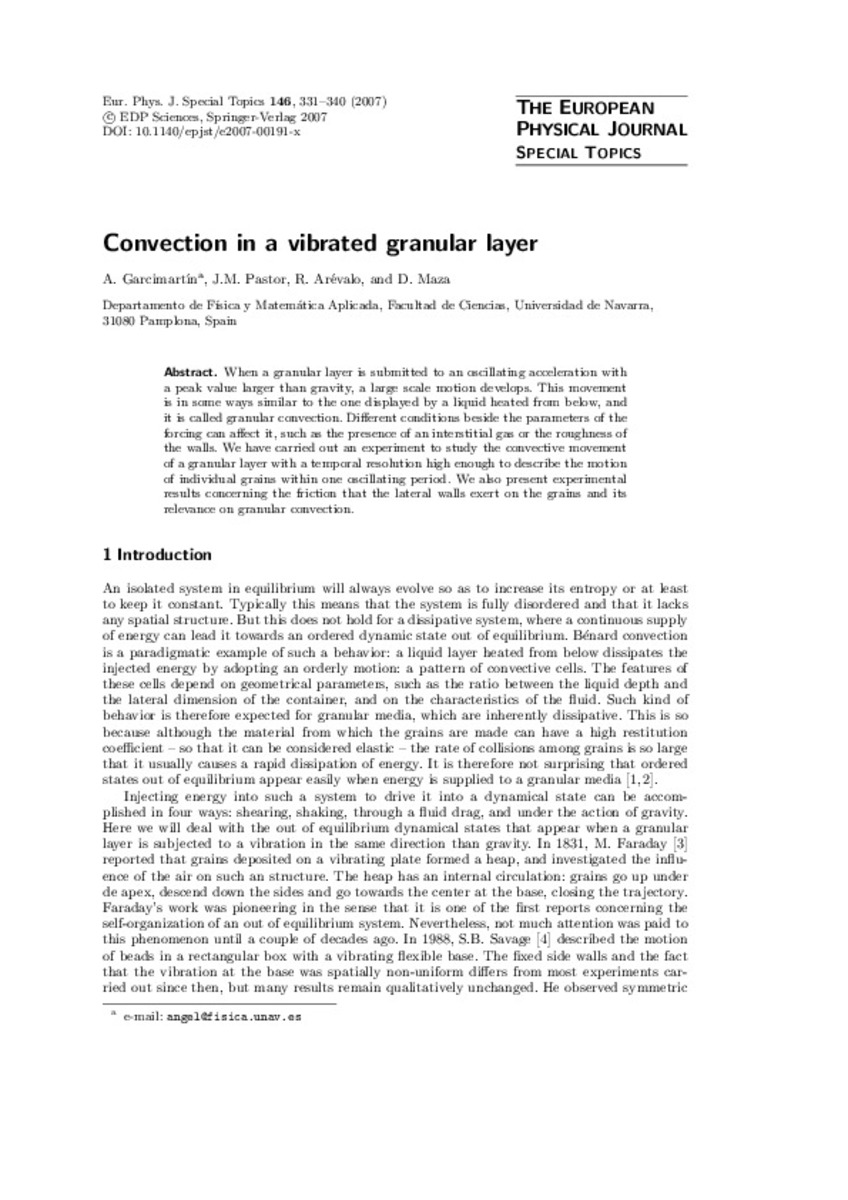Full metadata record
| DC Field | Value | Language |
|---|---|---|
| dc.creator | Montero, Á. (Ángel) | - |
| dc.creator | Pastor-Gutierrez, J.M. (José Martín) | - |
| dc.creator | Arevalo, R. (Roberto) | - |
| dc.creator | Maza-Ozcoidi, D. (Diego) | - |
| dc.date.accessioned | 2008-02-20T09:55:20Z | - |
| dc.date.available | 2008-02-20T09:55:20Z | - |
| dc.date.issued | 2007 | - |
| dc.identifier.citation | Eur. Phys. J. E. 146, pp.331-340 | es_ES |
| dc.identifier.uri | https://hdl.handle.net/10171/1755 | - |
| dc.description.abstract | When a granular layer is submitted to an oscillating acceleration with a peak value larger than gravity, a large scale motion develops. This movement is in some ways similar to the one displayed by a liquid heated from below, and it is called granular convection. Different conditions beside the parameters of the forcing can affect it, such as the presence of an interstitial gas or the roughness of the walls. We have carried out an experiment to study the convective movement of a granular layer with a temporal resolution high enough to describe the motion of individual grains within one oscillating period. We also present experimental results concerning the friction that the lateral walls exert on the grains and its relevance on granular convection. | es_ES |
| dc.language.iso | eng | es_ES |
| dc.rights | info:eu-repo/semantics/openAccess | es_ES |
| dc.subject | Materias Investigacion::Física | es_ES |
| dc.title | Convection in a vibrated granular layer | es_ES |
| dc.type | info:eu-repo/semantics/review | es_ES |
Files in This Item:
Statistics and impact
Items in Dadun are protected by copyright, with all rights reserved, unless otherwise indicated.






